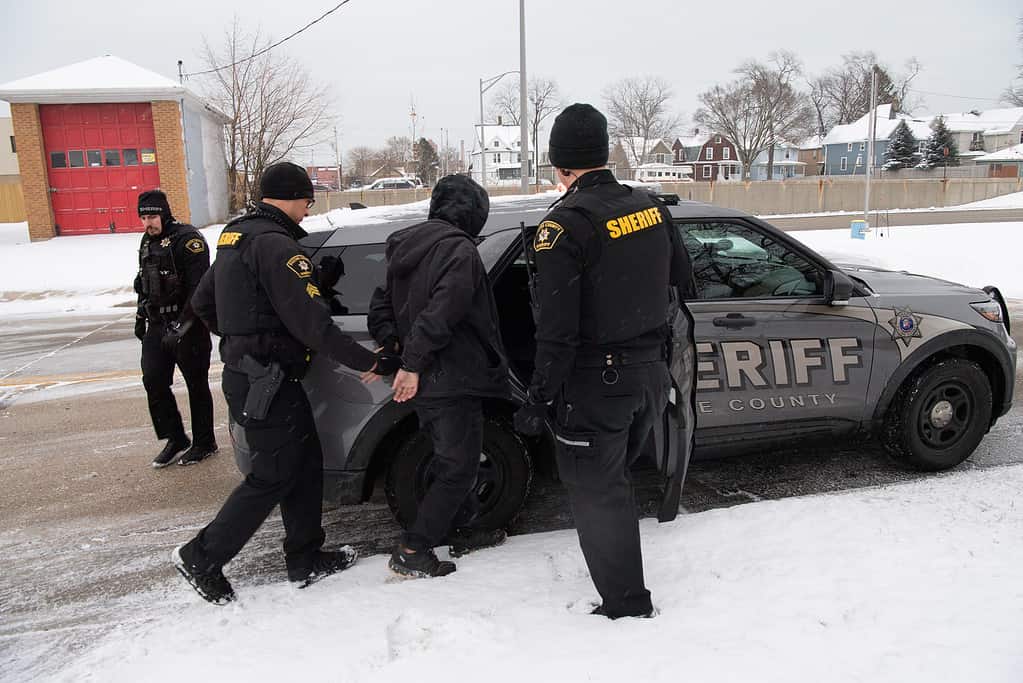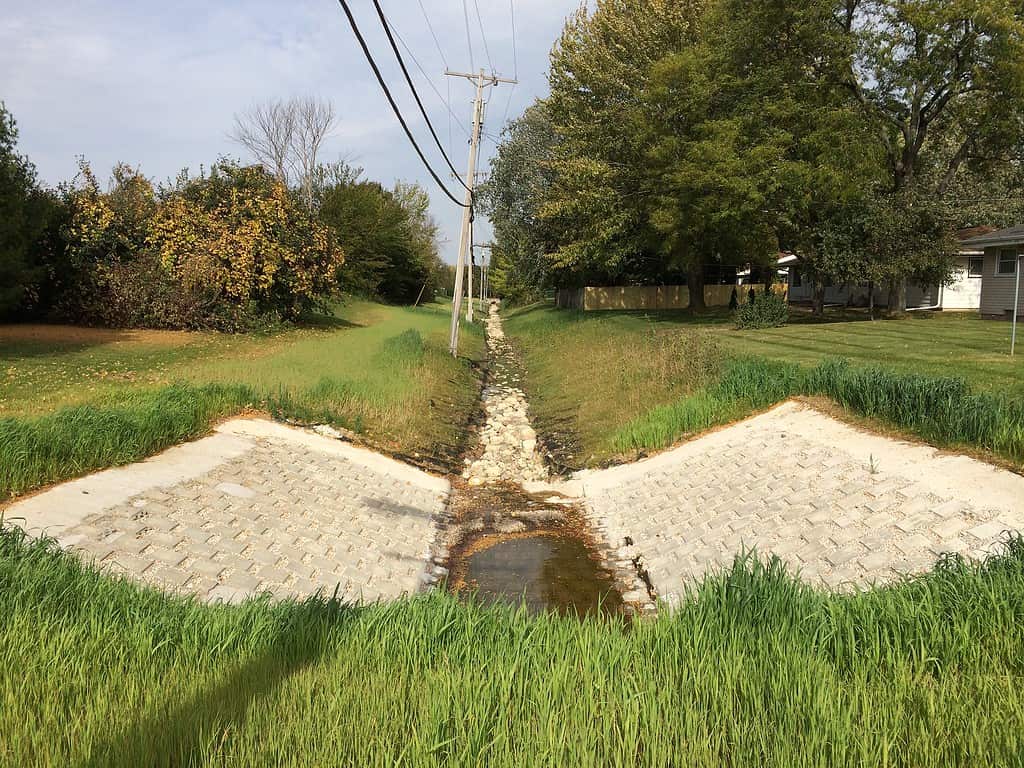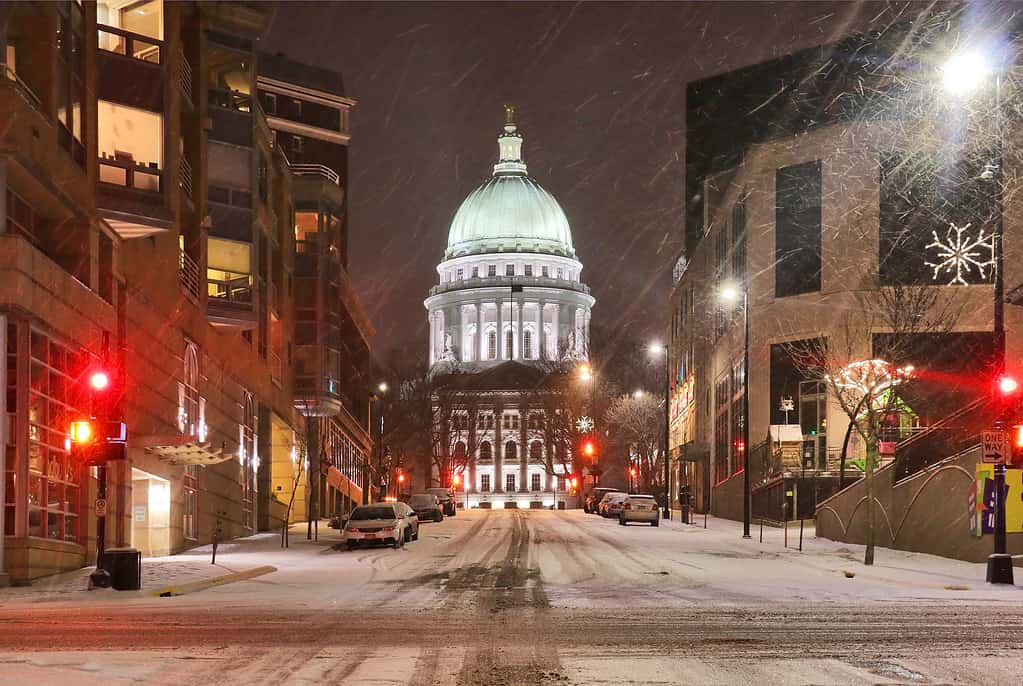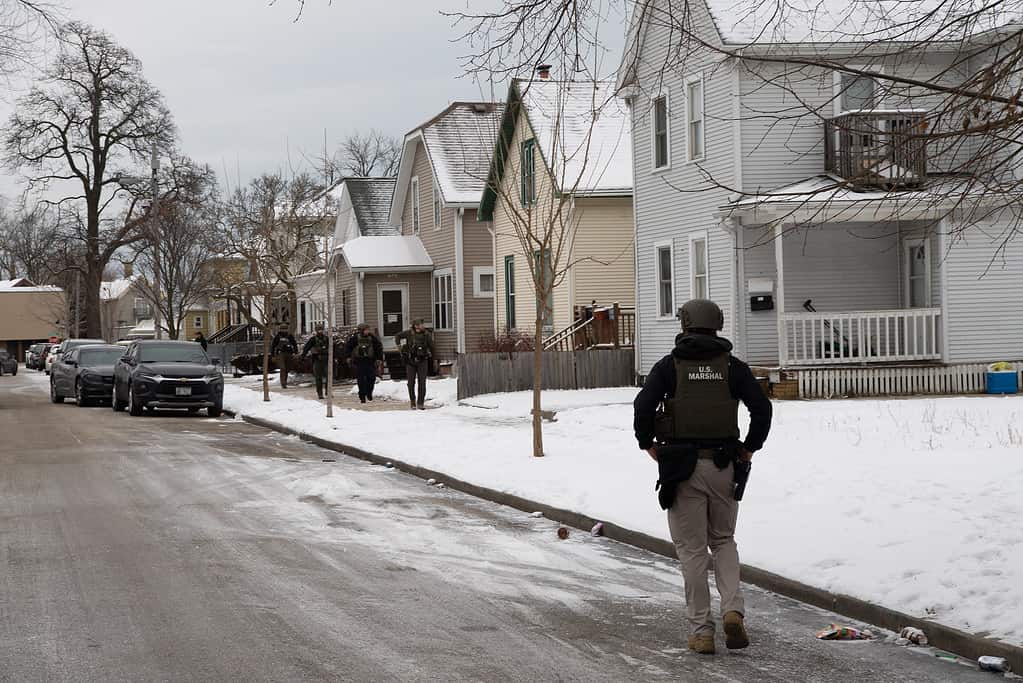Wisconsin‘s reputation for producing high-quality dairy products precedes it. Colloquially named “America’s Dairyland,” farmland rules much of this state’s land, accounting for 14.2 million acres. Even with an average size of 222 acres per farm, that still means that the state is home to over 60,000 farms. The affinity for beer is another well-known feature of the state, which is why it is the headquarters of Miller Brewing Company.
Many people also recognize Wisconsin because it hosts the 12th most dangerous city in the country – Milwaukee. “Awarded” by Forbes in 2023, Milwaukee is the most dangerous city in Wisconsin, and it happens to have the highest population. Let’s look at Milwaukee’s history and what makes it so dangerous.
History of Milwaukee
Before Milwaukee became an American city, it was the primary home of many indigenous tribes who used local rivers and other bodies of water to support them. The Menominee, Potawatomi, and Ojibwe were some of the original tribes who lived in the area that eventually became Green Bay in present-day Wisconsin.

The industrial development in Milwaukee created many jobs before their eventual loss in recent years, causing substantial poverty in the major city.
Origins of Milwaukee’s Name
There are a few theories among longtime locals of the way that Milwaukee received its name. One of the most popular theories suggests that it comes from the Ojibwe word “mino-akking,” which means “good land.” Others link it to the Algonquin word “mahn-a-waukee,” which means “gathering place.”
While the history of Milwaukee’s name comes from a lot of unreliable sources, it also earned quite a few nicknames in its time. One of the most common names for Wisconsin is Badger State, but that’s not because of an exceedingly high badger population. Instead, the name comes from a reference to the lead miners who worked in tunnels in the early 1800s. Since there was no shelter from Wisconsin’s harsh winters as they worked, they slept “like badgers” in the tunnels.
Transferring Ownership of Milwaukee
After attacks during the Black Hawk War, local tribes signed the 1833 Treaty of Chicago, which sacrificed the land while being promised money and land in Indian Territory in Mississippi. When European settlements took over, it became a highly concentrated city of primarily German immigrants in the 1850s. The Germanic influence over local culture remains today, celebrating both a German Fest during the summer and Oktoberfest in the fall.
Many Polish immigrants came during this expansion, but much of the settlements remained in the South Side of Milwaukee. They stayed close to this area until about 70 years ago when they started to move into suburban neighborhoods, creating more balance throughout the state. Lithuanian, Italian, Irish, French, Russian, Swedish, and Bohemian immigrants all found their homes in this area, adding to the strong influence of Serbian immigrants who already found their place.
To get a peek at some of the architectural and cultural influences of the many immigrants who started in Milwaukee, the historic district is the best option. Despite all of these changes in the city’s history, the crime index acts as a warning sign to anyone who might want to visit.
Milwaukee Crime Index

The crime rate in Milwaukee is one of the highest in the country.
While the most populated cities seem to be the most likely areas to have high crime rates, Milwaukee has the highest concentration of crime for the population, averaging 60 per 1,000 people being victims of violent crimes. If you travel or live in this city, your likelihood of being a victim of a violent crime is just 1 in 17.
Many factors influence the violence and dangers in Milwaukee. With high poverty levels, low wages for families, and easy access to weapons, the likelihood of a violent crime occurring is already high. With nearly 100,000 gun licenses issued, nearly half of Wisconsin owns guns. Milwaukee is even the home of Wisconsin Gun Owners, an organization dedicated to gun rights.
Recent years show that the cooperation between law enforcement and the rest of the community makes the problem even worse. Local authorities attempted to reduce violence with more bail restrictions, but experts aren’t confident in this solution.
Violent Crimes in Milwaukee
For violent crimes alone, Milwaukee ranks the third highest in the entire country. These violent crimes include homicide, aggravated assault, and robbery. The numbers rose significantly during the start of the COVID-19 pandemic as local crime rates rose in both 2020 and 2021. The Milwaukee Police Department released access to their crime maps and statistics to help locals have more awareness of the crimes around them.
Here is a summary of 2022’s top 5 major crimes in Milwaukee:
- Theft: 8,745
- Motor vehicle theft: 8,099
- Aggravated assault: 7140
- Burglary: 2,332
- Robbery: 1,808
In total, the police department recovered almost 29,000 crimes in 2022 alone. According to the most recent data, as of October 2022, over 20,000 crimes already occurred, close to the numbers recorded for the last year.
High Poverty Rates in Milwaukee

The high poverty rates contribute significantly to the high crime rates in this city, putting locals in a position of desperation.
Studies consistently show that some types of crime correlate with local poverty rates, and Milwaukee follows that statistic closely. The Hunger Task Force shows an 18.3% poverty rate among the population, and 26.4% of those people are children. With nearly 10% of all households with nearly no foot security, hunger in Milwaukee is a major problem.
Despite a significant agricultural contribution to the country, over 100,000 children, adults, and seniors don’t live above the poverty line. In 2023, the City of Milwaukee established a new grant – the Fresh Food Access Fund – to help with access to healthy food. Without access to healthy food, locals have a greater risk of dying of chronic disease. Despite being easily preventable, heart disease is the leading cause of death in Milwaukee, and having access to healthy foods puts the community in a step in the right direction.
Milwaukee’s Average Wages vs. Cost of Living

The low wages are a point of contention among union workers in Milwaukee.
Access to healthy or consistent food starts with making enough money to buy it, but the average wage in Milwaukee is $31.00 per hour. For someone without any children, having that hourly wage puts them above the poverty level. However, for a family of 5, it falls drastically short of what they need to live. Unfortunately, the poverty wage for a family of 5 would be about $16 per hour. Someone who makes the average wage in Milwaukee qualifies for no assistance but still wouldn’t make enough to support their family.
The cost of living in Milwaukee varies with each budget, but Living Wage shows that a family with just one child and one adult needs at least $76,000 annually to live. The imbalances put this state at a drastic disadvantage with high costs, low wages, and high poverty rates. The likelihood of crime rises greatly as more people struggle to make ends meet unless they have a high-paying job to support them.
Milwaukee’s Crime Rates: Compared to Other Wisconsin Cities
When it comes to other areas in Wisconsin, Milwaukee surpasses them substantially. The crime rate for Wisconsin is 3.2 per 1,000 people, which means that Milwaukee’s crime rate is 20 times higher than the state average. The crime rate dropped by 1% statewide in 2023, but the biggest issue that locals worry about is violent crimes.
Here’s a look at how it ranks against other cities with a high crime rate, based on the number of crimes per 100,000 people.
- Milwaukee: 1,596
- Beloit: 484
- Rice Lake: 480
- Brown Deer: 398
- Madison: 320
- West Allis: 319
Beloit

Despite the significantly lower population, Beloit’s dangerous city is rich with violent crimes and property damage.
Beloit has a drastically lower population of people, with just 36,657 residents, during the 2020 census. While local leaders vehemently deny that this city isn’t nearly that dangerous, a 2019 study by USA Today says that the true culprit has to do with the local violent crimes, poverty, and home values. While their home value matches the average for Wisconsin, their poverty levels are twice as bad.
Violent crimes accounted for 215 offenses, while property damage accounted for 836. For every 1,000 residents, at least 5 of them experience a violent crime, and at least 22 experience a property crime. While there are many reasons for the violence, the closure of several industrial facilities through the years increased unemployment, leaving fewer jobs to keep locals above the poverty line.
In addition to the crime, Beloit has many dangerous animals, including brown recluse spiders and cougars.
Rice Lake

Much of Rice Lake sits along the shore of the body of water with the same name.
©Joshua Mayer from Madison, WI, USA, CC BY-SA 2.0, via Wikimedia Commons – Original / License
Rice Lake, like Beloit, has twice the crime rate as the entire state of Wisconsin. Property damage is the whopping majority of these crimes – 93%. Larceny is the most common form of this damage, with approximately 3,214 instances per 100,000 people.
While other cities still have a high violent crime rate, Rice Lake happens to be the exception in this case. Even though the large majority of crimes are property damage, only 7% of all reported crimes are violent. While the national average for violent crimes is 379 instances for every 100,000 people, Rice Lake only has 251 instances.
Brown Deer

Much of Brown Deer is suburban housing, with less than 13,000 people in the entire city.
Brown Deer has 4+ violent crimes for every 1,000 people, while 53 out of every 1,000 people experience a property crime. Property crimes are a significant portion of the incidents yearly, but they are only 40% of the nation’s average. They have twice the number of thefts, 4,264 incidents for every 100,000 people per year. Vehicle theft is fairly close to the national average.
The most common violent crime is assault, affecting 308 out of every 100,000 residents. Homicide rates are 4 times the national average, though robberies in Brown Deer are less than half of the national average.
Madison

Madison is the capital of Wisconsin, but it only ranks as the second-largest city, surpassed by Milwaukee.
©UWMadison/iStock via Getty Images
With almost 270,000 residents, Madison is the second-largest city in Wisconsin. It is a college town with many younger residents, which some experts believe is the culprit behind high crime rates. Madison is fairly low for property crimes, even against the national average. The most common crime seems to be burglary, ranking third in the state. In 2020, residents reported 648 stolen.
The big issue in Madison is violent crime rather than property damage. On average, there is a 1 in 312 chance that you will experience a violent attack before the year is over.
West Allis

The violent crimes in West Allis rank it higher on the list than other large cities, with hundreds of cars stolen each year.
West Allis has an abundance of both violent crimes and property damage, especially during the last few years. Car thefts and burglaries are the most common property crimes. In 2022, there were almost 1,000 instances of theft and over 200 cars stolen.
The risk of violent crime is so high that there is an average of 2 assaults per week, even though the population is barely 60,000 residents. With at least 1 homicide annually, aggravated assault continues to stay in the double digits year after year.
Thank you for reading! Have some feedback for us? Contact the AZ Animals editorial team.








